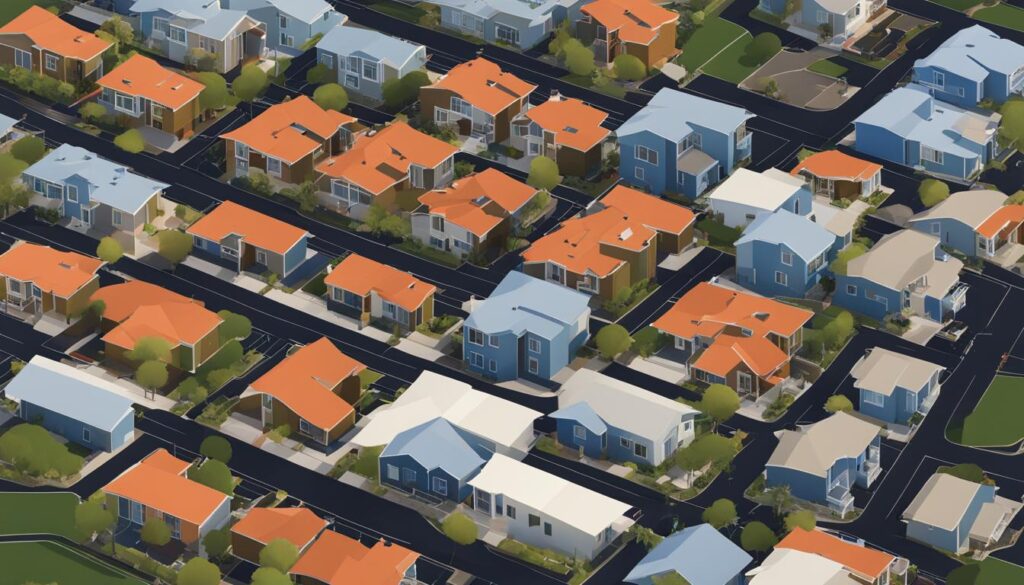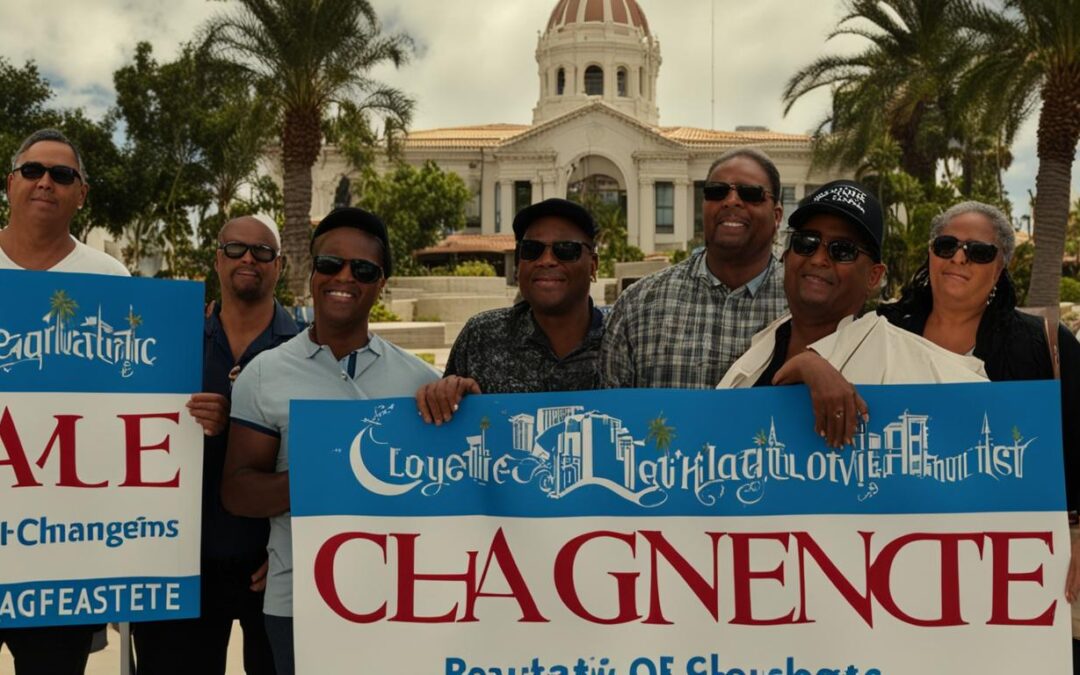Welcome to the pulse of the San Diego housing market—a scene that’s constantly in flux and brimming with opportunities. As a savvy individual with an interest in property trends within San Diego County, you’re probably aware that the real estate landscape is ever-changing. The recent legislative actions have had a significant impact on the market, shaping the future of real estate in this vibrant region.
With the enactment of powerful new laws aimed at increasing housing accessibility, you’re witnessing a period of transformation in San Diego real estate trends. Key legislation, such as Senate Bill 423 and Senate Bill 4, has been specifically designed to streamline the creation of affordable and middle-income housing. Such developments prove indispensable in staying updated with the latest San Diego real estate news.
It’s not just new construction that’s being talked about. The innovative policies now in place also encourage the revamping of existing structures. The division of land for developing townhomes and cottages has been simplified, and there’s a green light for accessory dwelling units (ADUs) to enter the market independently, a move that holds promise for property diversity in the area.
Key Takeaways
- Stay abreast of the latest developments in the San Diego real estate market.
- Understand the impact of recent legislation on housing affordability and availability.
- Discover how laws like SB 423 and SB 4 facilitate apartment development and affordability.
- Keep an eye on the growing trend of ADUs and their potential effects on San Diego’s housing dynamic.
- Recognize the role of legislative changes in shaping the future real estate environment of San Diego.
Legislative Changes Impacting the San Diego Housing Market
The landscape of San Diego’s housing market is on the brink of a transformation, with current legislative efforts taking center stage to shape a future that embraces efficiency and affordability. Keep abreast with the latest in San Diego real estate news digest, as we explore these fresh developments that are setting the scene for a new wave of housing opportunities in one of California’s most bustling counties.

New Bills Aimed at Streamlining Apartment Approvals
As you delve into the San Diego housing approvals process, note the significant role of Senate Bill 423. This law emerges as a groundbreaker in reducing bureaucratic complexity, thereby spurring the construction of apartment buildings that promise to be more accessible to lower-income demographics. It reflects a pointed strategy by legislators to bolster the creation of needed urban dwellings, ultimately delivering a tangible impact on the availability of affordable units.
Strides Towards More Affordable Housing in San Diego County
Senate Bill 4 works in tandem with SB 423 to forge a path to more affordable housing. Targeting properties held by religious institutions and non-profit colleges, this legislative change real estate actors have been advocating for provides a streamlined template for building affordable residential units. It’s an irrefutable stride towards acknowledging and catering to the housing requirements of San Diego’s diverse income groups.
Tackling Challenges in Local Real Estate Development
Despite forward movement with policy changes, San Diego’s real estate landscape is not devoid of hurdles. High-interest rates, slow approval processes, and workforce scarcities are persistent challenges. However, the commitment to flexible zoning and clearer planning protocols is a beacon of progress advocated by policy analysts, signaling auspicious developments for the real estate sector.
| Legislation | Beneficiaries | Expected Outcome |
|---|---|---|
| Senate Bill 423 | Lower-income renters, Developers | Accelerated apartment approvals |
| Senate Bill 4 | Communities served by religious/non-profit institutions | Construction of affordable housing on available land |
As you navigate the evolving dynamics of San Diego’s real estate market, these legislative changes are pivotal points to watch. The new statutes aim not only to reshape the urban skyline but also to lay a foundation of equality in housing access. Keep your finger on the pulse of San Diego real estate news digest for insights into how these beneficial reforms will unfold in the coming months.
San Diego Real Estate News: Trends and Transformations
As you navigate the shifting landscapes of the San Diego housing market trends, it’s essential to understand the vital role of California housing legislation in shaping these changes. The San Diego real estate updates of late showcase a bold step forward with the introduction of the ADU Bonus Program. This innovative measure allows for the construction of additional dwelling units on existing properties while addressing affordable housing by requiring a portion of these new units to be reserved for lower-income families. Its inception reflects a keen attempt by policymakers to mitigate the notorious housing crunch that clouds California’s vibrant cities.
The initiative, though lauded for its inventiveness, has not been without its detractors. Homeowners and community members have voiced concerns, suggesting the program may impinge upon the established character of neighborhoods and place undue stress on local infrastructure. Still, the possible uptick in readily available “missing middle” housing garners optimism among those keen on swift solutions to the state’s mounting housing demands. This bold experiment is indicative of San Diego’s willingness to confront and creatively rethink the parameters of urban development.
Active participants in the market, whether you’re real estate enthusiasts or potential homeowners, must stay abreast of these pivotal transformations. The developments in San Diego serve as a microcosm of broader state-wide efforts encapsulated by recent housing legislation. With each legislative session, the horizon of possibilities for San Diego’s real estate landscape continues to expand, signaling an era of robust growth and diverse opportunities for all market segments.
FAQ
What recent legislative actions have influenced the San Diego housing market?
Key legislative actions have been made in 2023 to streamline the home construction process, specifically apartment buildings for lower income levels with bills such as Senate Bill 423 and Senate Bill 4. These efforts, along with others like AB 1287 and SB 684, are aimed at increasing the accessibility and affordability of housing in San Diego.
How are the new laws going to simplify housing development in San Diego?
The new laws, such as SB 423, are designed to expedite approval processes for housing aimed at lower income levels. SB 4 focuses on streamlining the development on properties owned by religious institutions and non-profit colleges. AB 1287 encourages the construction of denser, taller buildings for middle-income units, while SB 684 simplifies land subdivision for townhomes and cottages development.
What is the San Diego ADU Bonus Program and how does it affect the housing market?
The San Diego ADU Bonus Program is an initiative that allows property owners to build additional dwelling units on their lots in exchange for setting aside some of these units as affordable housing. It’s intended to boost the supply of housing, particularly for the “missing middle.” This policy is a direct response to the housing shortage and aims to intensify density in residential areas.
What are some challenges the San Diego housing market still faces despite new legislative actions?
While new legislative actions aim to ease development processes and create more affordable housing, the San Diego housing market still faces hurdles such as high interest rates, sluggish approval times, and labor shortages, which can impede the progress of real estate development in the region.
What are the projected outcomes for the San Diego housing market following the introduction of these new laws?
Projected outcomes include an increase in available housing, particularly for lower and middle-income Californians. The laws are expected to bring more affordable units to the market, lead to more streamlined development processes, and contribute to a housing market that has the potential for growth and is more accessible to a broader range of people.
How is the “YIMBY” movement influencing real estate development in San Diego?
The “YIMBY” (Yes In My Backyard) movement advocates for increased urban density and housing construction to address housing shortages. In San Diego, this influence is reflected in policies like AB 1287, which allows for the construction of taller, denser buildings. The movement supports legislative changes that make it easier to build new homes, particularly affordable ones, in urban areas.


Recent Comments